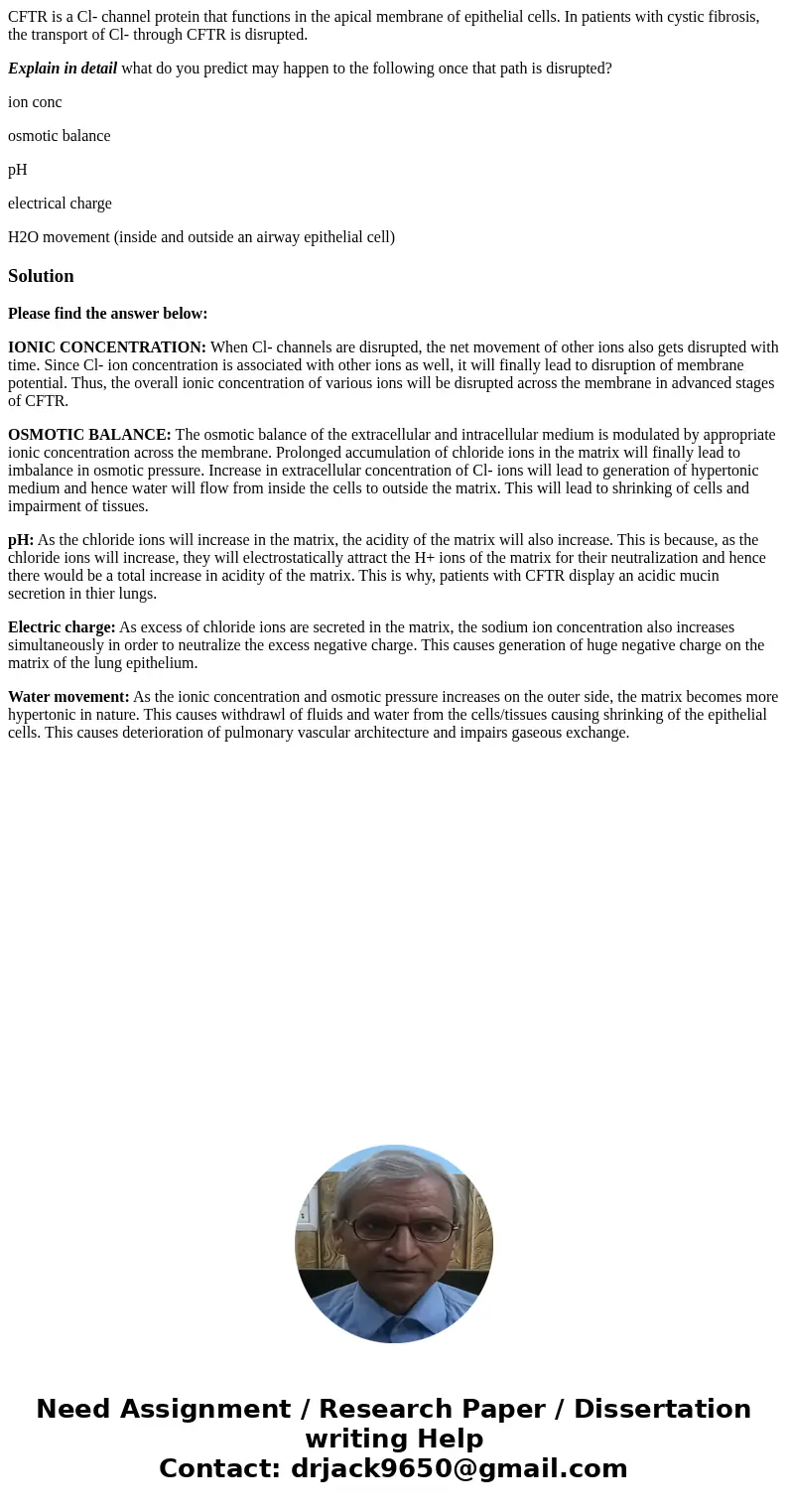CFTR is a Cl channel protein that functions in the apical me
CFTR is a Cl- channel protein that functions in the apical membrane of epithelial cells. In patients with cystic fibrosis, the transport of Cl- through CFTR is disrupted.
Explain in detail what do you predict may happen to the following once that path is disrupted?
ion conc
osmotic balance
pH
electrical charge
H2O movement (inside and outside an airway epithelial cell)
Solution
Please find the answer below:
IONIC CONCENTRATION: When Cl- channels are disrupted, the net movement of other ions also gets disrupted with time. Since Cl- ion concentration is associated with other ions as well, it will finally lead to disruption of membrane potential. Thus, the overall ionic concentration of various ions will be disrupted across the membrane in advanced stages of CFTR.
OSMOTIC BALANCE: The osmotic balance of the extracellular and intracellular medium is modulated by appropriate ionic concentration across the membrane. Prolonged accumulation of chloride ions in the matrix will finally lead to imbalance in osmotic pressure. Increase in extracellular concentration of Cl- ions will lead to generation of hypertonic medium and hence water will flow from inside the cells to outside the matrix. This will lead to shrinking of cells and impairment of tissues.
pH: As the chloride ions will increase in the matrix, the acidity of the matrix will also increase. This is because, as the chloride ions will increase, they will electrostatically attract the H+ ions of the matrix for their neutralization and hence there would be a total increase in acidity of the matrix. This is why, patients with CFTR display an acidic mucin secretion in thier lungs.
Electric charge: As excess of chloride ions are secreted in the matrix, the sodium ion concentration also increases simultaneously in order to neutralize the excess negative charge. This causes generation of huge negative charge on the matrix of the lung epithelium.
Water movement: As the ionic concentration and osmotic pressure increases on the outer side, the matrix becomes more hypertonic in nature. This causes withdrawl of fluids and water from the cells/tissues causing shrinking of the epithelial cells. This causes deterioration of pulmonary vascular architecture and impairs gaseous exchange.

 Homework Sourse
Homework Sourse